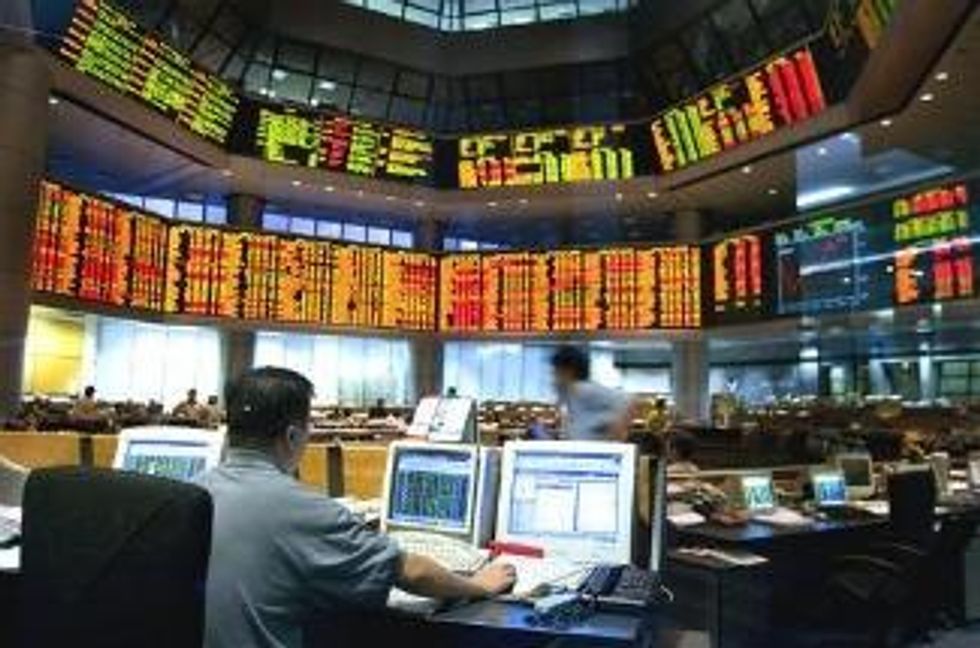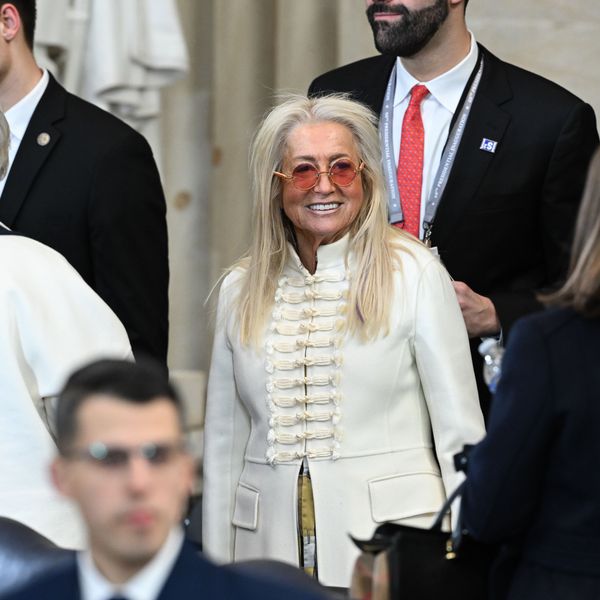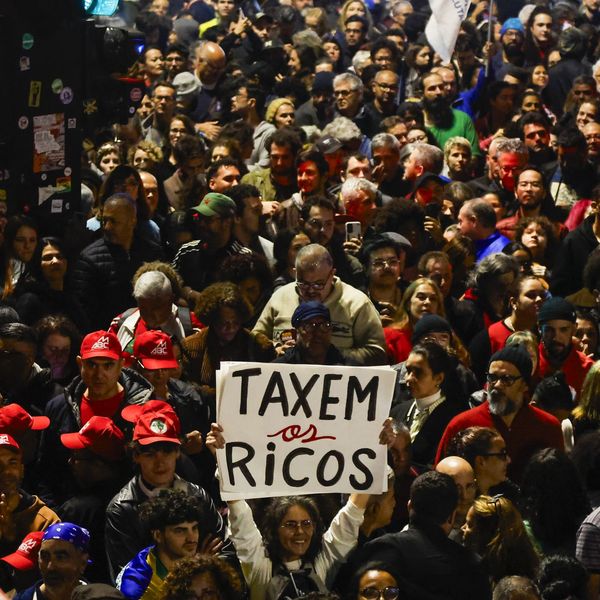We Are the 90% (Who Don't Own Stocks)
Actually, the richest 10% don't own ALL the stocks. But they own over 80% of the stock market, while the richest 20% of Americans own 93% of our country's financial wealth.
Many of the rest of us own SOME stocks, and would certainly like to own more. But given that we don't, we would at least like to know that the happy owners of stock market wealth don't have an unfair advantage over us.

But they do. Do they ever.
Wealthy America is made wealthier by the 15% capital gains tax, which allows millionaires, as famously observed by Warren Buffett, to pay a smaller percentage in taxes than their secretaries. IRS data shows that only 19% of 2008 income reported by the 13,480 individuals or families making over $10 million came from wages and salaries. Thanks in good part to capital gains, the richest 400 taxpayers DOUBLED their income and nearly HALVED their tax rates in just seven years (2001-2007). So dramatic is the change that anyone making more than $34,500 a year in salary and wages is taxed at a higher rate than an individual with millions in capital gains.
A particularly insidious form of capital gain is "carried interest," a name given to income by private-equity and hedge fund managers to help them avoid taxes. In just one year a single hedge fund manager made enough money to hire 100,000 new teachers while calling his $5 billion income "carried interest" so he could defer the little amount of taxes he owed.
There's yet more to the madness. The stock market has grown much faster than the GDP over the past century, which means that this special tax rate is being given to people who already own most of the unearned income that keeps expanding faster than the productiveness of real workers.
How has this bipolar system remained in place so long? The long-running explanations include the allegedly beneficial effect of a smallish tax on entrepreneurial activity and capital formation, investment in the U.S. economy, and job creation and innovation.
But the evidence shows that no relationship exists between the capital gains tax rate and investment. As noted in the Washington Post, "The top tax rate on investment income has bounced up and down over the past 80 years - from as high as 39.9 percent in 1977 to just 15 percent today - yet investment just appears to grow with the cycle, seemingly unaffected." In fact, the low rate may even have a negative effect on growth. A Congressional Research Service report states: "Capital gains tax rate increases appear to increase public saving and may have little or no effect on private saving. Consequently, capital gains tax increases likely have a positive overall impact on national saving and investment."
It does seem certain that the tiny tax rate available to a privileged few is promoting inequality. Both the Congressional Budget Office and the Congressional Research Service have concluded that the 15% rate is the largest contributor to the concentration of wealth at the top.
Yet despite all this, the delusion persists. Many political leaders feel that the capital gains tax should be ELIMINATED. As Newt Gingrich said in 1998, "If you really wanted the most wealth created over the next 20 years, you would have a zero rate for the capital gains tax, which is a tax on job creation."
It's as if the people in charge have no sense of the average American who might have a couple thousand in savings, or a few thousand in a tax-sheltered retirement account where the capital gains rate does not apply. The benefits of economic growth accrue to Congressmen and business leaders and media executives and perhaps 10 to 20 percent of Americans. Most of the others, the food service workers and health care employees and store clerks and maintenance workers who can only watch as their social programs continue to be cut, get little of the free money being choked out of a once-productive middle class.
An Urgent Message From Our Co-Founder
Dear Common Dreams reader, The U.S. is on a fast track to authoritarianism like nothing I've ever seen. Meanwhile, corporate news outlets are utterly capitulating to Trump, twisting their coverage to avoid drawing his ire while lining up to stuff cash in his pockets. That's why I believe that Common Dreams is doing the best and most consequential reporting that we've ever done. Our small but mighty team is a progressive reporting powerhouse, covering the news every day that the corporate media never will. Our mission has always been simple: To inform. To inspire. And to ignite change for the common good. Now here's the key piece that I want all our readers to understand: None of this would be possible without your financial support. That's not just some fundraising cliche. It's the absolute and literal truth. We don't accept corporate advertising and never will. We don't have a paywall because we don't think people should be blocked from critical news based on their ability to pay. Everything we do is funded by the donations of readers like you. Will you donate now to help power the nonprofit, independent reporting of Common Dreams? Thank you for being a vital member of our community. Together, we can keep independent journalism alive when it’s needed most. - Craig Brown, Co-founder |
Actually, the richest 10% don't own ALL the stocks. But they own over 80% of the stock market, while the richest 20% of Americans own 93% of our country's financial wealth.
Many of the rest of us own SOME stocks, and would certainly like to own more. But given that we don't, we would at least like to know that the happy owners of stock market wealth don't have an unfair advantage over us.

But they do. Do they ever.
Wealthy America is made wealthier by the 15% capital gains tax, which allows millionaires, as famously observed by Warren Buffett, to pay a smaller percentage in taxes than their secretaries. IRS data shows that only 19% of 2008 income reported by the 13,480 individuals or families making over $10 million came from wages and salaries. Thanks in good part to capital gains, the richest 400 taxpayers DOUBLED their income and nearly HALVED their tax rates in just seven years (2001-2007). So dramatic is the change that anyone making more than $34,500 a year in salary and wages is taxed at a higher rate than an individual with millions in capital gains.
A particularly insidious form of capital gain is "carried interest," a name given to income by private-equity and hedge fund managers to help them avoid taxes. In just one year a single hedge fund manager made enough money to hire 100,000 new teachers while calling his $5 billion income "carried interest" so he could defer the little amount of taxes he owed.
There's yet more to the madness. The stock market has grown much faster than the GDP over the past century, which means that this special tax rate is being given to people who already own most of the unearned income that keeps expanding faster than the productiveness of real workers.
How has this bipolar system remained in place so long? The long-running explanations include the allegedly beneficial effect of a smallish tax on entrepreneurial activity and capital formation, investment in the U.S. economy, and job creation and innovation.
But the evidence shows that no relationship exists between the capital gains tax rate and investment. As noted in the Washington Post, "The top tax rate on investment income has bounced up and down over the past 80 years - from as high as 39.9 percent in 1977 to just 15 percent today - yet investment just appears to grow with the cycle, seemingly unaffected." In fact, the low rate may even have a negative effect on growth. A Congressional Research Service report states: "Capital gains tax rate increases appear to increase public saving and may have little or no effect on private saving. Consequently, capital gains tax increases likely have a positive overall impact on national saving and investment."
It does seem certain that the tiny tax rate available to a privileged few is promoting inequality. Both the Congressional Budget Office and the Congressional Research Service have concluded that the 15% rate is the largest contributor to the concentration of wealth at the top.
Yet despite all this, the delusion persists. Many political leaders feel that the capital gains tax should be ELIMINATED. As Newt Gingrich said in 1998, "If you really wanted the most wealth created over the next 20 years, you would have a zero rate for the capital gains tax, which is a tax on job creation."
It's as if the people in charge have no sense of the average American who might have a couple thousand in savings, or a few thousand in a tax-sheltered retirement account where the capital gains rate does not apply. The benefits of economic growth accrue to Congressmen and business leaders and media executives and perhaps 10 to 20 percent of Americans. Most of the others, the food service workers and health care employees and store clerks and maintenance workers who can only watch as their social programs continue to be cut, get little of the free money being choked out of a once-productive middle class.
Actually, the richest 10% don't own ALL the stocks. But they own over 80% of the stock market, while the richest 20% of Americans own 93% of our country's financial wealth.
Many of the rest of us own SOME stocks, and would certainly like to own more. But given that we don't, we would at least like to know that the happy owners of stock market wealth don't have an unfair advantage over us.

But they do. Do they ever.
Wealthy America is made wealthier by the 15% capital gains tax, which allows millionaires, as famously observed by Warren Buffett, to pay a smaller percentage in taxes than their secretaries. IRS data shows that only 19% of 2008 income reported by the 13,480 individuals or families making over $10 million came from wages and salaries. Thanks in good part to capital gains, the richest 400 taxpayers DOUBLED their income and nearly HALVED their tax rates in just seven years (2001-2007). So dramatic is the change that anyone making more than $34,500 a year in salary and wages is taxed at a higher rate than an individual with millions in capital gains.
A particularly insidious form of capital gain is "carried interest," a name given to income by private-equity and hedge fund managers to help them avoid taxes. In just one year a single hedge fund manager made enough money to hire 100,000 new teachers while calling his $5 billion income "carried interest" so he could defer the little amount of taxes he owed.
There's yet more to the madness. The stock market has grown much faster than the GDP over the past century, which means that this special tax rate is being given to people who already own most of the unearned income that keeps expanding faster than the productiveness of real workers.
How has this bipolar system remained in place so long? The long-running explanations include the allegedly beneficial effect of a smallish tax on entrepreneurial activity and capital formation, investment in the U.S. economy, and job creation and innovation.
But the evidence shows that no relationship exists between the capital gains tax rate and investment. As noted in the Washington Post, "The top tax rate on investment income has bounced up and down over the past 80 years - from as high as 39.9 percent in 1977 to just 15 percent today - yet investment just appears to grow with the cycle, seemingly unaffected." In fact, the low rate may even have a negative effect on growth. A Congressional Research Service report states: "Capital gains tax rate increases appear to increase public saving and may have little or no effect on private saving. Consequently, capital gains tax increases likely have a positive overall impact on national saving and investment."
It does seem certain that the tiny tax rate available to a privileged few is promoting inequality. Both the Congressional Budget Office and the Congressional Research Service have concluded that the 15% rate is the largest contributor to the concentration of wealth at the top.
Yet despite all this, the delusion persists. Many political leaders feel that the capital gains tax should be ELIMINATED. As Newt Gingrich said in 1998, "If you really wanted the most wealth created over the next 20 years, you would have a zero rate for the capital gains tax, which is a tax on job creation."
It's as if the people in charge have no sense of the average American who might have a couple thousand in savings, or a few thousand in a tax-sheltered retirement account where the capital gains rate does not apply. The benefits of economic growth accrue to Congressmen and business leaders and media executives and perhaps 10 to 20 percent of Americans. Most of the others, the food service workers and health care employees and store clerks and maintenance workers who can only watch as their social programs continue to be cut, get little of the free money being choked out of a once-productive middle class.

